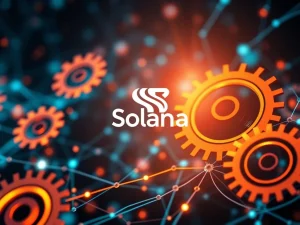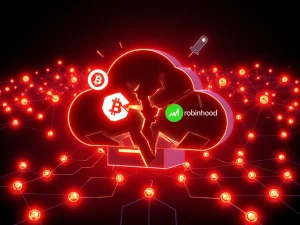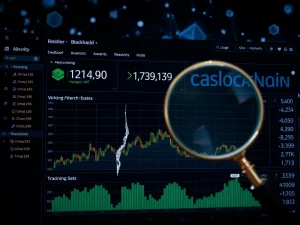Urgent: Tokenized Property Faces Critical Succession Challenge

The world of finance is rapidly evolving, and one of the most exciting frontiers is the tokenization of real-world assets (RWAs). Imagine owning a piece of a skyscraper, a rare artwork, or even agricultural land, all represented by digital tokens on a blockchain. This revolutionary shift promises democratized access to investments previously limited to the wealthy. However, as RWA tokenization accelerates, a critical, often overlooked question emerges: What happens to these digital assets when the owner dies, divorces, or simply loses their keys? This isn’t just a hypothetical; it’s an urgent challenge for the future of tokenized property.
Why Succession is a Critical Hurdle for Tokenized Property
The trajectory of real-world assets moving onto the blockchain is undeniable. We’ve seen high-profile examples, from major real estate projects being tokenized in the MENA region to multi-billion dollar RWA deals. Forecasts suggest trillions of dollars in real estate alone could be tokenized by 2035. This speed is creating a market where anyone, regardless of capital size, can potentially participate.
But this rapid advancement hits a significant roadblock when confronted with the age-old concept of inheritance. Traditional property law has established mechanisms for transferring ownership upon death. Blockchain, by design, is immutable and often tied to private keys known only to the owner. Without a native, secure, and legally recognized way to handle succession, these valuable tokenized property assets risk being:
- Permanently lost if keys are inaccessible.
- Tied up in complex, ambiguous jurisdictional disputes.
- Stuck in ‘black box’ custodianship with unclear access for heirs.
While regulatory frameworks like MiCA are addressing many aspects of digital assets, the fundamental pillar of inheritance in the context of RWA tokenization remains largely unaddressed.
Existing Solutions Fall Short for Digital Inheritance
Current methods for securing digital assets, while useful for active owners, are insufficient for reliable digital inheritance:
- Cold Keys: Storing private keys offline is secure for the owner but introduces the risk of the key being lost or the designated heir not knowing where or how to access it after the owner’s passing. If the key is gone, so is the inheritance.
- Multisig Wallets: Requiring multiple keys for transactions adds security, but setting this up for inheritance means trusting designated heirs with keys beforehand, or facing complexity in distributing keys after death.
- Custodial Services: Relying on a third party introduces counterparty risk and goes against the decentralized ethos of blockchain ownership.
These solutions lack the automation and trust-minimization required for a truly robust blockchain succession mechanism. The goal is to ensure asset transfer is as seamless and certain as traditional inheritance, but within the unique framework of digital ownership.
Building a Native Blockchain Succession Solution
The answer to secure digital inheritance for real-world assets lies within blockchain technology itself. By creatively combining existing and emerging concepts, we can build automated protocols. One promising approach is a decentralized data survivability protocol (DeDasP).
Such a protocol could leverage smart contracts to define inheritance conditions. Upon meeting these conditions (e.g., a verified death certificate trigger, or a pre-set time lock), the smart contract could automatically initiate the transfer process. This transfer could involve sharding the private key into multiple pieces, perhaps represented as NFTs, distributed among designated heirs. Accessing the full asset would then require a threshold of these NFT shards, similar to a multisig setup, but automated via smart contract logic.
Addressing concerns about heirs losing their key shards, integrating biometric authentication could add another layer of security and accessibility, linking the digital inheritance directly to the heir’s physical identity, bridging the gap between the digital and physical worlds.
This blend of smart contracts, sharding, NFTs, and biometrics offers a path to automate blockchain succession, providing clarity and security for passing down valuable tokenized property across generations. It defines digital property rights in a way that aligns with the permanence and independence promised by Web3.
The Path Forward for RWA Tokenization and Digital Inheritance
Integrating robust succession mechanisms is not merely a technical feature; it’s essential for the long-term viability and growth of the RWA tokenization industry. The vision of democratized ownership of real-world assets cannot be fully realized if the assets are vulnerable to loss due to death, divorce, or lost keys.
As the market moves at ‘bullet-train speeds’ towards tokenization, equally fast and reliable solutions for transferring ownership upon death must be developed and standardized. Without them, the promise of seamless, accessible ownership could falter, undermined by the very issues blockchain aims to solve.
The good news is that the technology exists to build these systems. By prioritizing native, trust-free blockchain succession protocols, we can ensure that ownership of tokenized property doesn’t end with the first owner but can be safely and automatically passed down, securing generational wealth in the digital age.








